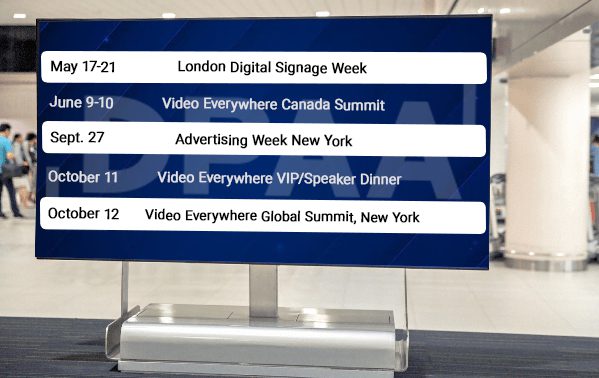In DOOH Time
Growing Role of #DOOH in Omnichannel Today
04/29/2021 | Issue #1

WELCOME
Welcome to the inaugural issue of In DOOH Time, our publication devoted to keeping you up to date on the latest goings on not only here at the DPAA, but in the fast-growing world of digital out of home. If you know me at all, then I don’t have to explain my unbridled enthusiasm for this exciting industry and its limitless potential to help brands and agencies win over consumers in a brand-safe, uncluttered, locationally relevant environment. Whatever your message, it will be seen, felt, heard and acted on!
In this issue don’t miss our guest column on Identity by Ari Buchalter; get to know JC Conti, DPAA Board member from VIOOH a bit better; and catch up on our Town Hall meeting. Plus since it’s a DPAA newsletter we’ll bring you some fun, practical tips and suggestions on keeping your teams connected.
I’m so excited especially now as society emerges from more than a year of battening down the hatches to battle COVID. This spring feels like no other in the reawakening of business, in newfound hope for fresh beginnings and new growth opportunities. Heck, dolphins are even swimming in the East River. If that doesn’t make you feel like something exciting is happening, I don’t know what to tell you. And I commend all our members who somehow not only survived the downturn we experienced last year, but somehow have found ways to grow!
In the vibrant world of digital out of home (you’re going to see the DOOH acronym a lot in these virtual pages!), so much is happening, and we are here to showcase its superpowers! Our industry delivers technological advances, programmatic simplicity, off-the-charts creativity, and provable ROI. No kryptonite here.
So please read on! And let me know what you think! I can always be reached at info@dpaaglobal.com
Barry Frey
CEO, DPAA
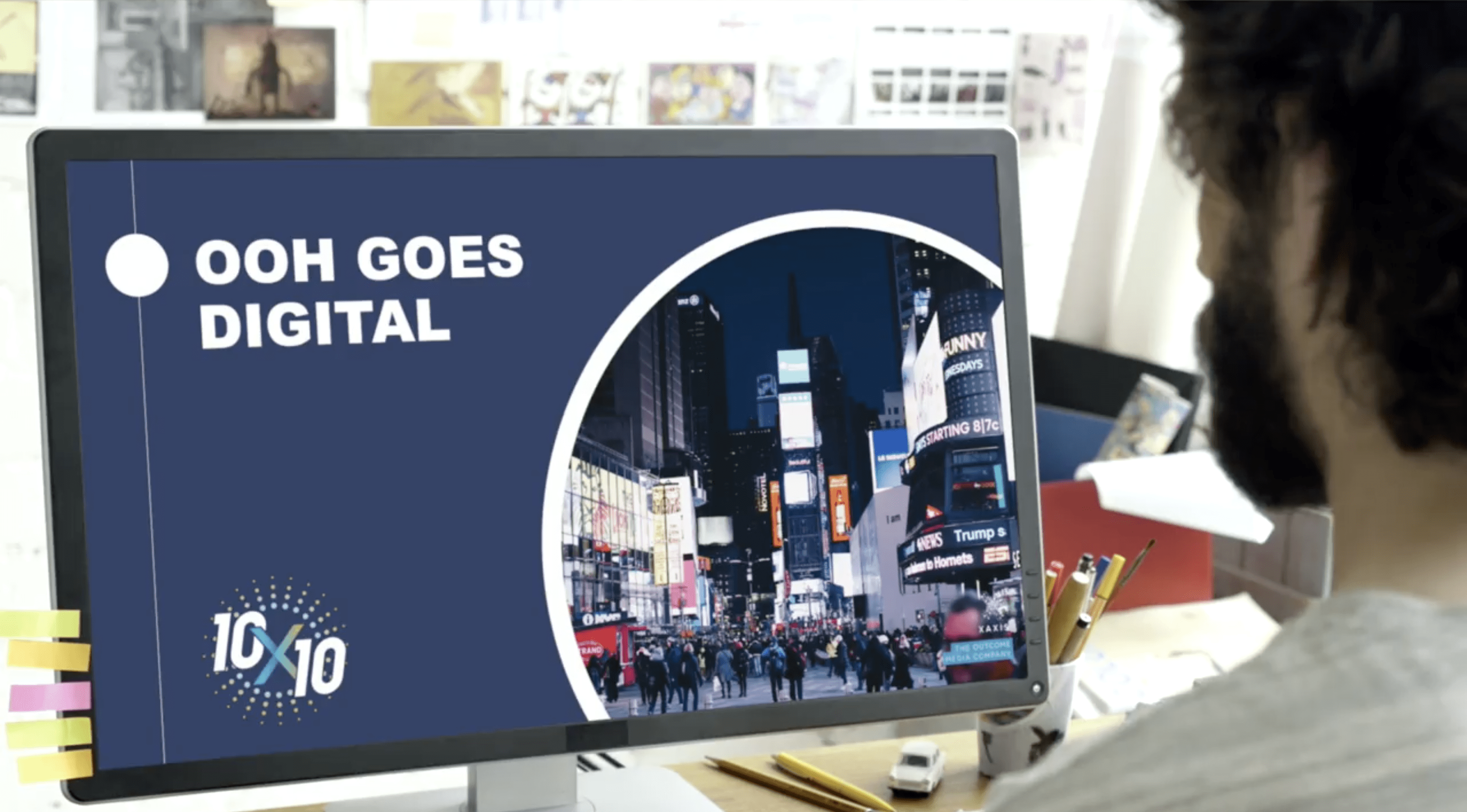
SPRINGING BACK TO LIFE: SIGNS OF GROWTH FOR DOOH
Game of Thrones may have popularized the phrase “Winter is coming!” but Barry Frey just cornered the market on “Spring Awakening!”
The outgoing and energetic CEO of DPAA, the leading global digital out-of-home (DOOH) industry trade association, led his membership in a Town Hall meeting on March 25 that felt very much like a church revival celebrating the return of business, opportunity and the potential for growth.
Frey, the DOOH industry’s champion, kicked off the Town Hall’s proceedings extolling the virtues of this time of year—especially coming out of yearlong pandemic.
“It’s blossoming time … it’s freedom, it’s joy, it’s refreshing—man, do we need it, right?” Frey declared, offering the industry his trademark optimism and witticisms. “It’s the time that lifts us up, the flowers are blooming. People are coming out, and if there was ever a time for our industry to welcome people coming out, it’s Springtime 2021.” He even offered a viral video captured just the day before of dolphins cavorting in New York’s East River as evidence this spring is and will be like no other, especially for digital OOH.
After ticking off DPAA’s accomplishments, both a Davos Forum and a Women’s Empowerment Forum, Frey declared DPAA has never experienced such strong membership growth in its existence. Citing National Retail Federation numbers predicting $4.4 trillion in retail spending globally for this year, he also cited GroupM’s Brian Wieser forecast that OOH is expected to grow by 18 percent globally, with especially positive growth in the U.S. (23%) and the U.K. (31%).

THE PORTLAND PROGNOSTICATOR
Brian Wieser, GroupM’s global president of business intelligence, who Frey lovingly dubbed the “Portland Prognosticator,” offered up his optimistic outlook on the economic recovery underway through his ad forecasting. Madison Avenue’s de-facto chief economist had predicted a 12 percent gain in global advertising in 2021 (leaving 2020’s huge political ad spend out of the equation) but indicated that expectations have gone up, making for “a pretty robust market.” Wieser’s theory of “creative destruction” that stimulates advertising affected small businesses hard at the beginning of 2020, but he noted that third-quarter witnessed something akin to 60 percent growth rate for small business, and another 30 percent in fourth-quarter, signaling a strong return to spending on advertising. Wieser also predicted in his conversation with Frey that travel and entertainment, two categories hardest hit during the pandemic, will return strong this year, while automotive which he described as “on fire,” could be affected negatively by a looming chip shortage. Finally, Wieser soberly predicted mid-single-digit growth for OOH, noting that brand building can be a point of positive distinction for the industry—and with digital taking a larger share of growth than traditional.
Next, Frey cataloged the list of boards DPAA runs, including a new Brand CEO Council, the We.DOOH Advisory Board, which provides women inspiration, mentoring and leadership, and the Diversity Board, which encourages diversity across the globe. He also announced progress on a task force to develop new audience measurement research, a number of DPAA committees, and urged members to get involved.

THIS BUD’S FOR YOU
Brand guest for this DPAA Member Town Hall was Anheuser-Busch’s digital lead for Bud Light and challenger brands (Landshark, Estrella, Patagonia, etc.) Brian Weidy, who reminded Frey that the brewer has long been a devoted user of classic billboards. He shared with the audience his brands’ use of digital screens that put ad messages much closer to point of purchase, such as gas stations and in-store, adding that he plans to keep it up with an upcoming Bud Light Seltzer campaign.
It’s safe to say, given the success of this Town Hall, that the DPAA will continue to host these informational, educational and all-around fun sessions. Barry Frey, social ringmaster and inherent showman that he is, would have it no other way. Whether he’ll be able to get the dolphins to make a return appearance in the East River remains to be seen.

LOOK INTO THE FUTURE
Talking on programmatic’s potential to be a “superpower” for DOOH, Frey introduced Gila Wilensky, president of WPP’s Xaxis unit, who walked the audience through the company’s just-launched 10X10 program that dives deeply on 10 trends in the industry today—and where those trends will be in a decade. She focused on five of them, including:
- Identity (cookies were never meant to be the be-all end-all for digital identity), predicting the rise of biometric information and face recognition, as well as Internet of Things interconnectivity;
- Artificial intelligence (more testing and learning, and freeing humans to do other things), predicting that AI will be as ubiquitous in 10 years as the Internet is today but focusing on ethics will play a role in its advancement;
- Ecommerce (growth in the last year has been huge, although in-store sales remain at 85 percent of sales), predicting that commerce will explode with more comparison shopping engines, advances in digital wallets and other forms of disruption;
- OOH goes digital (brands continue to activating OOH plans), predicting more seamless embedding of screens indoors and outdoors, including in-car ad opportunities with self-driving cars;
- Talent (workforce evolution in the COVID era), predicting a rise in data scientists, analysts, programmatic specialists and companies investing in always-on learning.

HOCKEY STICK PROGRAMMATIC GROWTH
Matt Prohaska, who runs his own consulting firm and is evangelizing the use of programmatic in managing DOOH inventory. “It’s going to be fantastic, guys, when we’re all back out there again!” Prohaska said he expects “a rejuvenation of this entire industry,” and cited hockey-stick growth in programmatic ad spend. Using a “Data Roach Motel” analogy of the walled gardens amassing data that they don’t share, Prohaska said he believes there’s “a rejuvenated global effort” for DPAA members to take advantage of a “groundswell” of effort to level the playing field again and improve ad spend for the broader industry that isn’t Google or Facebook. “There’s a massive opportunity here to deliver true improved ROAS.”
Happy Spring!

The last few years have seen dramatic advancements in the measurability of DOOH advertising performance, thanks to the advent of mobile location data that can be tied to DOOH ad exposure. But with Apple’s recent iOS changes regarding user tracking, some have worried that just as DOOH is joining the attribution big leagues, the game is about to be cancelled.
Time out.
At a high level, there are three scenarios that might play out around the evolution of mobile data and each one will still allow for marketers to accurately measure the impact of advertising, including DOOH.
Scenario 1: Same IDs, just less of them – The ultimate impact of the iOS changes depends on how many consumers opt in to share their data. Some early results suggested that 30-45% of users may opt in to sharing their data, much higher than many had predicted.
If true, that is significant, in the statistical sense. Achieving valid measurement of campaign response rates, CPAs, and ROIs doesn’t require 100% coverage of the population – it only requires a large enough sample for statistically valid measurement. Even if only 10 or 20 percent of users opt in to share data, that would be large enough for the vast majority of DOOH measurement use cases. In short, there was ample data before iOS 14.5 to power attribution for DOOH and it’s looking like there may still be ample data after.
Scenario 2: New IDs – But for argument’s sake, let’s pretend the opt-in rate will be closer to 0%, such that MAIDs effectively go the way of their online cousin, the cookie. While the deprecation of third party cookies is something of a non-event for DOOH (which for the most part doesn’t leverage browser-based ad delivery), the dozens of cookie-replacement solutions that have already sprung up suggest we might see MAID replacement solutions as well. In fact, we already are.
Any new solution that enables a publisher to join mobile location data to a unique user signature (such as a logged-in identifier, a so-called “fingerprint” ID, etc.) that can then be shared with a buyer, all in a privacy-compliant manner, could form the basis for attribution measurement. Of course, scenarios 1 and 2 are not mutually exclusive and any advances around new privacy-compliant approaches would only serve to expand the universe of data when it comes to performance measurement for DOOH.
Scenario 3: No IDs – There is a school of thought that believes deterministic measurement as we know it will ultimately disappear and that what will emerge in its place are entirely probabilistic approaches that use experimental design and a wide range of non-personal data signals to generate statistical predictions of advertising impact. One could think of these as akin to marketing mix models, but on steroids, with more data inputs, more granularity, and more powerful machine learning methods that could rival the accuracy of deterministic models but with far greater scale.
Those models, by their nature, would be applicable across all channels, including DOOH. They would also key off of inputs such as the precise time and location of ad delivery, as well as ad formats, asset types, venue categories, and contextual information – all of which DOOH could provide with extremely high fidelity. Even traditional marketing mix models have demonstrated the extremely strong performance of DOOH media compared to other channels, and that conclusion would likely be reinforced as more powerful cross-channel probabilistic measurement techniques emerge.
So which scenario is most likely? The truth is that we will likely see all three: a decline in “traditional” mobile data signals (but likely still enough for valid measurement), new deterministic signals that could add additional scale, and the advent of new probabilistic techniques that will powerfully complement and expand on deterministic approaches.
Where does that leave DOOH from a performance measurement standpoint? In a stronger position than ever – a rookie that is about to change the game.

SPOTLIGHT ON:
Jean-Christophe “JC” Conti
CEO, VIOOH (pronounced “View”)
100+ employees
HQ in London
Currently operating in 12 markets across the U.S., Europe and Asia-Pacific
Known in the out-of-home industry as JC, Jean-Christophe Conti has led programmatic DOOH specialist VIOOH since the business launched in 2018, and was just named to the DPAA Board of Directors in February. With over 25 years of digital experience, JC has overseen the company’s expansion of programmatic trading (working with buyers and sellers) in markets across Europe, the U.S. and the Asia-Pacific region, including a recent launch in Australia. His goal is to hit 18 markets globally by end of 2021.
The French-born industry thought leader is pioneering the transformation of digital OOH mainly by championing VIOOH’s use of programmatic and open real-time bidding technology in planning and executing omni-channel digital campaigns. It helps to have the financial backing of industry giant J.C. Decaux, which also uses VIOOH exclusively for its programmatic planning and execution.
“This is a really exciting time to be in out of home as the industry accelerates the switch to digitization,” says JC, a married father of three. “As we emerge from the pandemic, the shift to programmatic in OOH will be more pronounced. And in my role on the DPAA board, I hope to help the industry not only better understand the value of programmatic in DOOH, but to advance adoption across the industry as well.”
Prior to joining VIOOH, JC’s wide-ranging and international experience included roles in various media and ad tech companies, managing large multi-market commercial and product teams. He held senior roles at Yahoo!, where he spent over 10 years, wrapping up his time there as Vice President, Partnerships Group for the EMEA region. He then joined AppNexus in 2014 as Vice President managing the Publishers Business Unit for EMEA.
JC’s loves outside of work, besides his family, include skiing, cooking and enjoying a fine red wine.
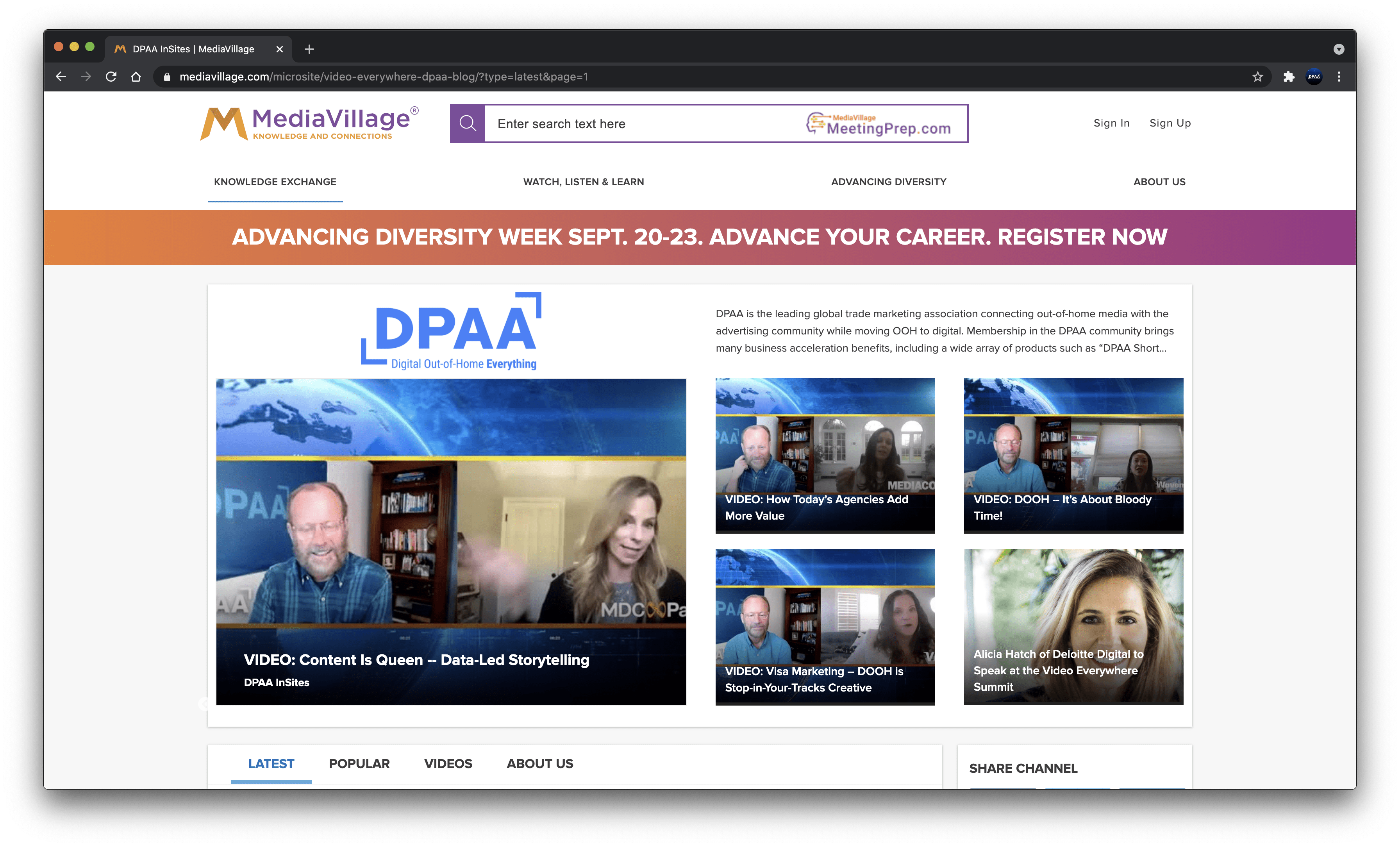
ICYMI: New DPAA Short Connects
A library of your favorites!
Our Short Connects video news series goes into the hearts, minds, homes and decision making of today’s advertising decision-makers. See our latest collection and catch up on ones you might have missed.
We are pleased to report that now DPAA Short Connects can be found on our Youtube page and is distributed via Mediavillage.

NUMBERS DON’T LIE: OOH EXPECTED TO GROW
Are your media rates as bold as they can be, relative to other media choices that brands and media buyers have at their disposal? International media auditing firm ECI Media Management’s latest media inflation report forecasts 2021 media pricing growth in North America. In North America, out of home media is expected to grow its rates the most, at 6.8%, outpacing digital video at 5.5%, digital display at 3.4%, radio at 2.9% and TV at 1.4%. (Print media is forecast to continue to shrink: -4.6% for magazines, and -6.0% for newspapers.) Global estimates for media rate growth are a bit more conservative for OOH, with digital video leading the way at 3.6%, followed by growth of 3.4% each for digital display, OOH and TV, and radio just behind at 2.8%. (Print again finds itself in the negative, with newspapers dropping 1% and magazines down 2.3%.)
ECI’s forecasts overlap nicely with the three main media agency revenue forecasters’ estimates for 2021 revenue growth across U.S. media: IPG’s Magna, Publicis’ Zenith and WPP’s GroupM. Veteran ad forecaster Brad Adgate consolidated all three agencies’ forecasts in a Forbes opinion piece, and here’s what he says about each of them:
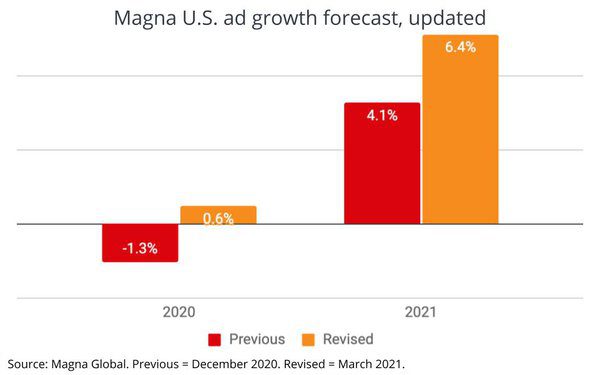
- Magna: “The U.S. ad marketplace will grow by 4%, reaching $230 billion for the year, surpassing 2019 ad dollars … After a dismal 2020, Magna projects cinema and OOH advertising to bounce back the most among the five traditional media outlets as consumers become more mobile.”
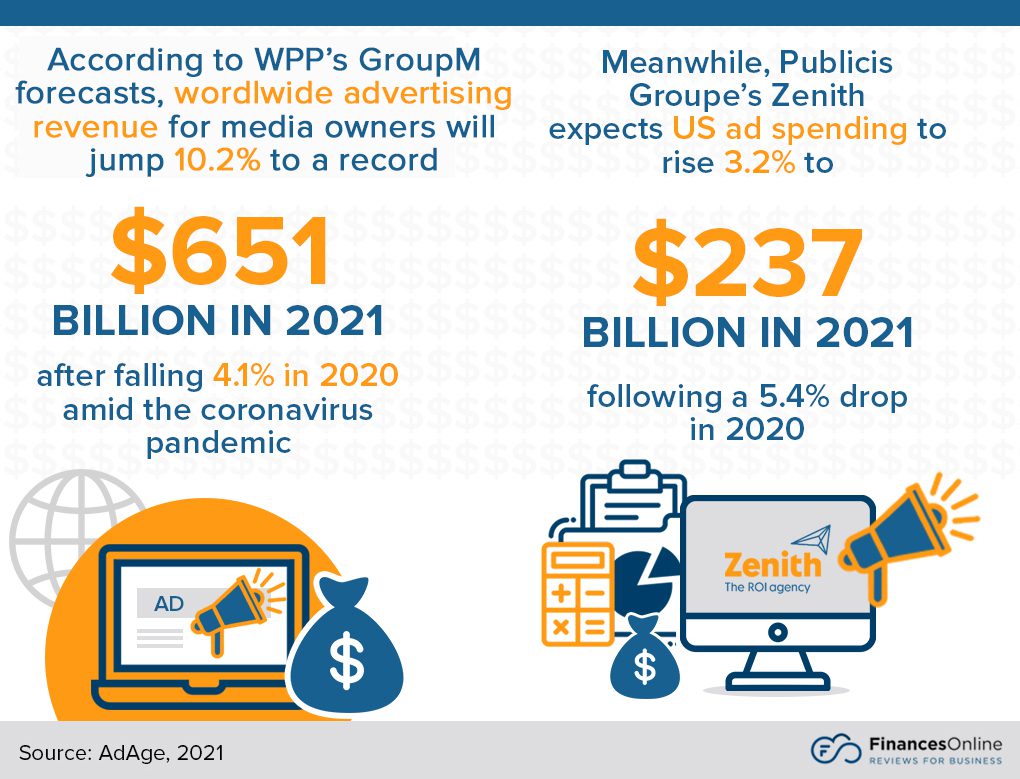
- Zenith: “U.S. ad marketplace will grow by 4%, reaching $230 billion for the year, surpassing 2019 ad dollars … Zenith expects digital media to grow by a more robust 9.6% in 2021, totaling $136.3 billion, accounting for 57.6% of all ad dollars. In 2021 among traditional media, cinema and OOH will have the largest year-over-year increase in ad dollars.
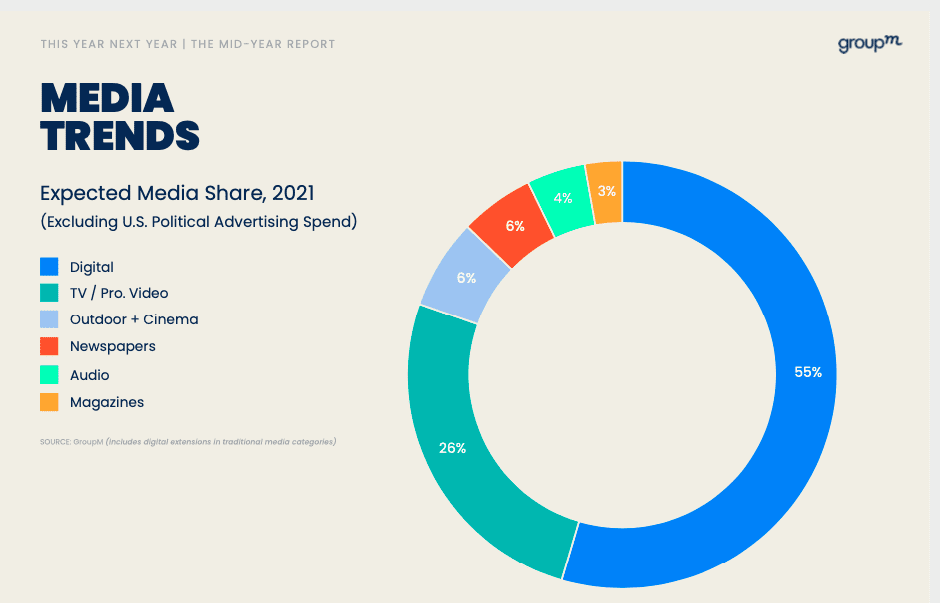
- GroupM: “In the U.S. market for 2021, GroupM projects the ad marketplace to bounce back reaching $242.2 billion, a year-over-year increase of 6.2% (+11.8% when political dollars are omitted). In 2021 the agency forecasts ad spend for digital media to grow by 14.1% accounting for 54.0% of ad dollars. Looking at traditional media, GroupM forecasts robust year-over-year growth for cinema and OOH.”
PREPARING FOR CANADA
Now in its 4th year, we’ll once again host our Video Everywhere Canada Summit. The event will be livestreamed on June 9 & 10, from 11am to 1pm eastern each day! Last year’s event had over 700 delegates; great presentations and discussions with Canadian CEOs from Carat, Kinetic, Mediacom and nights from Mastercard’s global media head and Kruger CMO. Mark your calendars now! For information on speaking, sponsoring, and participating connect with us.


